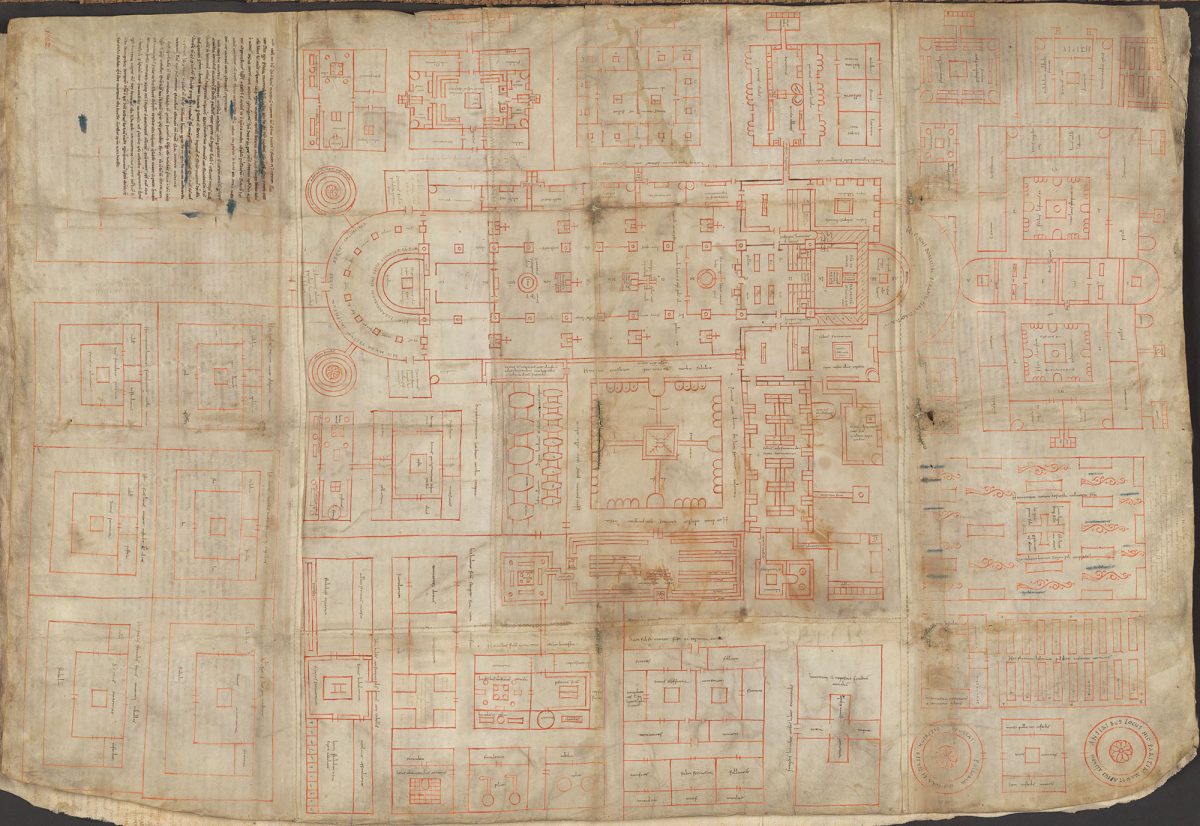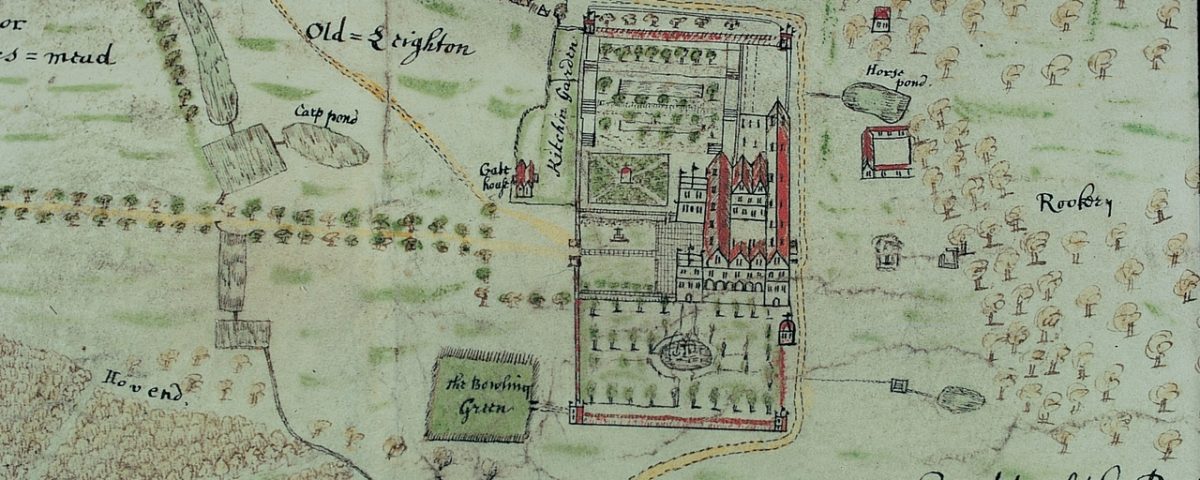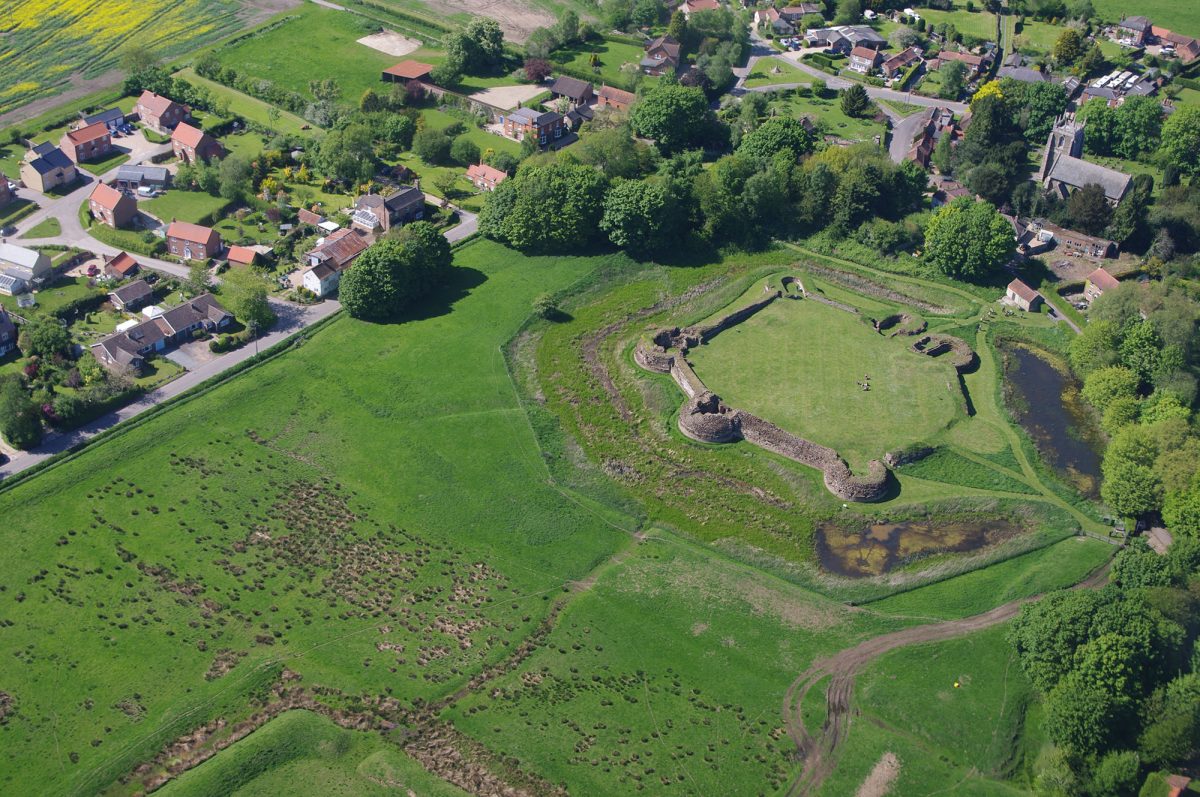Monasteries
Monasteries, manors & economic powerhouses
Topic 5: Monasteries
The main phase of monastery building in Lincolnshire took place during the 12th century.
Wealthy land owners gifted manors to religious orders such as the Cistercians, and the order would construct a monastery according to an established plan. This would be centred around a church and cloister and would be enclosed with a precinct wall that would isolate the community from the rest of the world.
It has been established that where monasteries were granted on existing manors, they could have a significant impact on the medieval settlement, with tenants of the manor being relocated and their houses demolished. It has also been suggested that religious orders enclosed more land than their predecessors, and in the fens they certainly engaged in land reclamation.
9th century plan of the monastery of St Gall showing typical arrangement of buildings.
1
In addition to taking over lands and establishing a unique enclosed settlement, monasteries had legal rights and responsibilities and were often granted markets and fairs, all of which would have an impact on the pattern of local non-religious settlement.
2
Those settlements close to a monastery would have been forced to create a close economic relationship with the religious order to ensure that they benefited from the trade generated by the fairs and markets, rather than losing to it.
3
This was not always a smooth process and the records of disputes and agreements between religious establishments and their secular neighbours and tenants can provide valuable insight into the form and management of the landscape.
Dissolution
In the mid-16th century, the monasteries were initially taken over by the crown, and then largely dismantled and sold off to fund Henry VIII’s wars.
As a result, monastic sites were either completely abandoned, or converted into country houses.
Whilst many monastic sites have at least some standing walls remaining, many have been reduced to grassed over earth works, and some have even disappeared under the plough.
This is something of a unique situation where a significant part of the medieval landscape was, within the space of a few years, almost completely removed.
The only other instance of a landscape feature being so completely desolated is those castles and fortified houses that were demolished or slighted during the English Civil War, and they were nowhere near so prevalent, nor as influential on local land use.
17th century illustration of a post-dissolution house and gardens (Photo: The Bedford Estate)
Bolingbroke castle which was slighted (partially demolished) during the English Civil War. (Photo: Ben Robinson)



